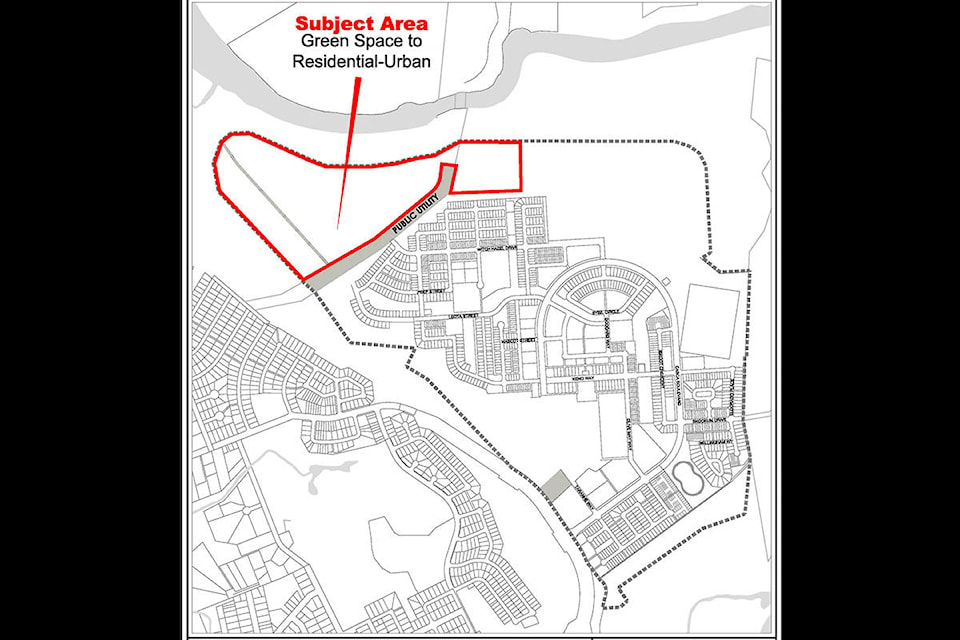A 56.3 hectare piece of land in Whistle Bend could move closer to being designated for residential development on Dec. 7 when Whitehorse city council votes on second reading of an Official Community Plan amendment.
At council’s Nov. 30 meeting, Mike Gau, the city’s director of development services, brought forward a public hearing report summarizing the eight written submissions from city residents that the city received during the Nov. 23 public hearing on the change.
Due to COVID-19, in-person presentations at public hearings are not happening, but residents can make submissions in writing.
In this case, three residents noted their opposition to the proposed OCP change that would bring the site closer to residential development with another five highlighting a variety of concerns with it.
Among the major issues that came up was the potential impact development could have on the environment and recreation in what is now a natural area; the impact on transportation and what some argued was the need for more public engagement on the matter.
Gau noted nearly all submissions highlighted concerns over the impact to recreational trails that run through the area.
“Many residents from Porter Creek use the trails in and around the site,” he said. “The concerns pertain to potential loss of trails, maintaining them in their natural state and providing adequate screening between the trails and development.”
He went on to state that most existing trails through the site would be maintained with some new accessible, paved trails being added. Areas identified as being high environmental or wildlife value would also be preserved and green space that was identified in the 2006 green space map would be protected.
It was also noted the Yukon Environmental Socio-economic Assessment Board has reviewed the concept for the proposed development.
“The assessment report submitted for YESAB approval took potential environmental and socio-economic impacts into account and provided suitable mitigation and monitoring measures,” Gau said. “These recommendations will be further reviewed at the neighbourhood construction and subdivision stages.”
The preliminary design for the area would create 15.5 ha of greenspace, including the new accessible trails.
“Public greenspace will comprise 27.6 per cent of the site, which is much higher than the minimum 10 per cent area required to be reserved for public use in a new land subdivision under the Municipal Act,” Gau said.
Questioned further about trails by Coun. Laura Cabott, Gau acknowledged that while much of the trail network will be maintained, there will be some changes after development as trail entrances and transitions would be from a more urban environment with some trails going through more developed areas.
Coun. Samson Hartland, meanwhile, focused a number of questions around the impact development could have on traffic and transportation. Hartland pointed out there’s already a lot of traffic moving from Porter Creek and Whistle Bend downtown in the morning.
Gau said the city-wide transportation study the city is working on will provide information for further planning that could address traffic through the area.
Questioned by Hartland about when the study would be finished, Gau said it’s not expected to be done until the spring of 2022 as time is needed to gather data and look at traffic throughout the entire city.
Proposed connections from Whistle Bend to the Alaska Highway via Pine Street or McDonald Road could be part of traffic considerations as the population increases, it was noted in Gau’s report.
As Gau noted about the potential to connect Whistle Bend with MacDonald Road: “Additional planning and technical analysis are required to understand the feasibility of this connection. This is outside the scope of the proposed OCP amendments.”
Hartland suggested that the issues with traffic are not going to get any easier in the near future.
It was also noted that connections for active transportation between this part of Whistle Bend and the rest of the neighbourhood will be considered in future planning processes.
Highlighting concerns that there is a need for greater public engagement on the proposals, Gau pointed to events that have been underway since 2018 as well as an online survey that considered this area of Whistle Bend, which resulted in the concept for the area.
“There would be further engagement opportunities during the detailed design and zoning amendment processes,” he stated in his report.
Gau stressed that if council moves forward with the OCP change, further opportunities to look at specific detailed planning for the area would also happen.
“The best way to address these concerns is through subsequent zoning amendment, subdivision approval and development agreement with (the Yukon government),” Gau stated.
If second reading of the OCP amendment is approved on Dec. 2, ministerial approval will be required before third reading comes forward to council.
Contact Stephanie Waddell at stephanie.waddell@yukon-news.com
